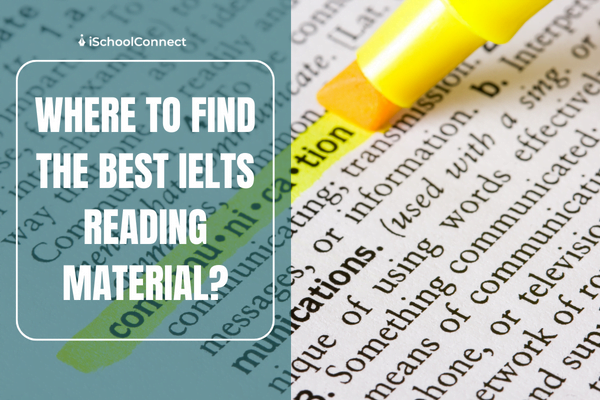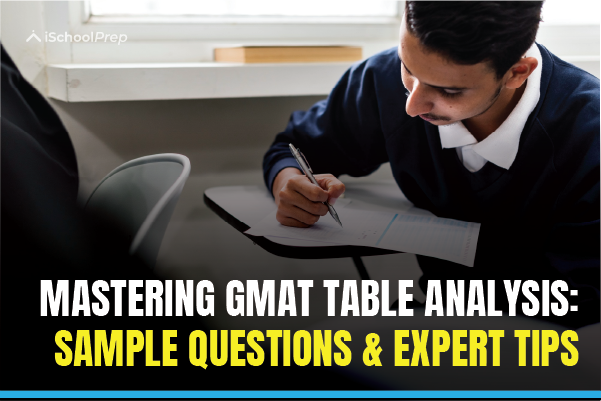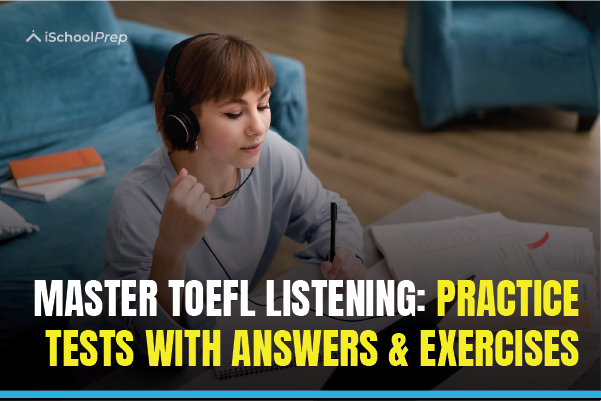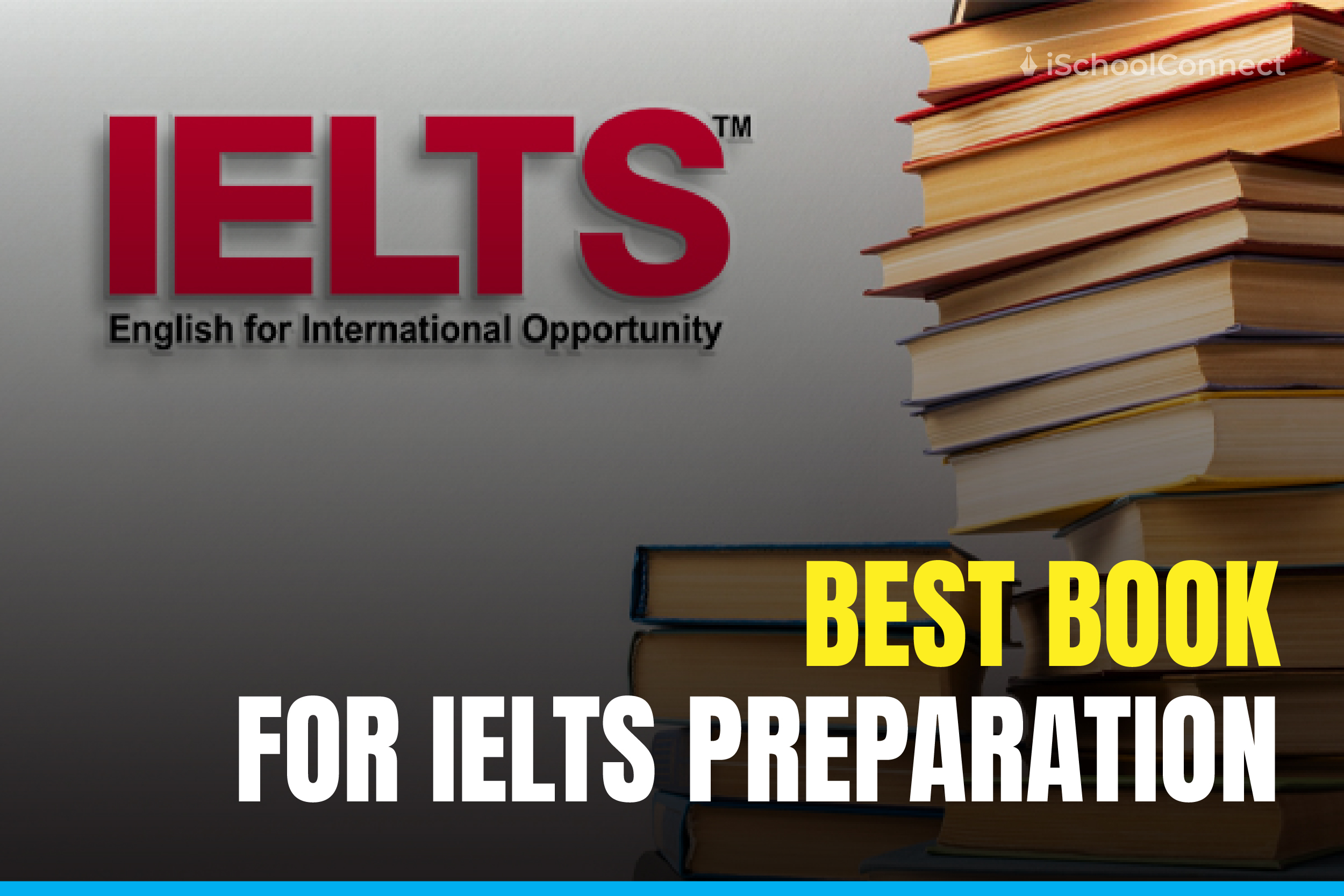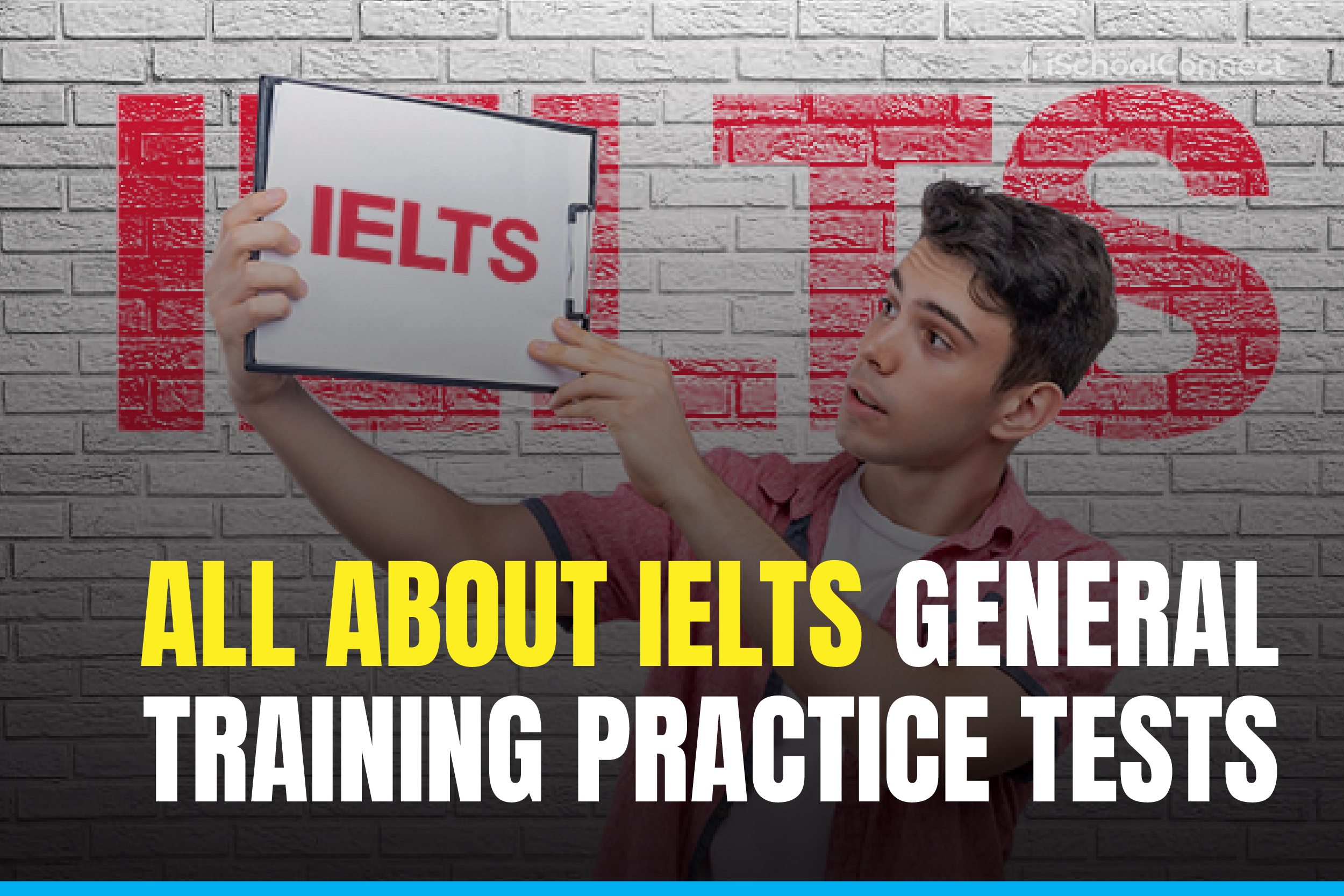Table of Contents
- IELTS Reading
- IELTS Reading Practice Test Based on Question Types
- Tips to Solve Multiple Choice Questions in IELTS Reading
- Tricks to Solve Sentence Completion in IELTS Reading
- Tricks to Solve Table/Note Completion in IELTS Reading
- Tricks to Solve Summary Completion in IELTS Reading
- Tricks to Solve True/False/Not Given Questions in IELTS Reading
- Tricks to Solve Matching Information in IELTS Reading
- Tricks to Solve Matching Sentence Endings in IELTS Reading
- 5 Smart Strategies to Ace Your Reading IELTS Practice Test
- Best IELTS Reading Material for Effective Preparation
- Key Takeaways
- FAQs
Preparing for the IELTS Reading section requires more than just basic comprehension skills—it demands focused practice with the right tools. The key to success lies in selecting the best IELTS reading material that mirrors the actual exam format and challenges. From official Cambridge guides to interactive online platforms, high-quality reading materials provide you with targeted exercises, realistic practice tests, and valuable tips.
IELTS Reading
The IELTS Reading section is structured differently based on whether you’re taking the Academic or General Training version of the test. Selecting the correct test type is crucial before starting your IELTS reading material and practice sessions.
Let’s look at the format for both IELTS Academic Reading and IELTS General Reading:
IELTS Academic Reading
Key features of the IELTS Academic Reading test include:
- The test duration is 60 minutes.
- It consists of three sections, each featuring a long passage ranging from 2,150 to 2,750 words.
- The reading texts are selected for their relevance and are aimed at individuals preparing for undergraduate, postgraduate, or professional registration in fields like teaching or medicine in English-speaking countries.
IELTS General Reading
Here’s what you should know about the IELTS General Reading module before attempting the practice test:
- The duration is also 60 minutes, similar to the Academic version.
- It includes three sections with varying topics:
- Section 1 features two short, factual texts related to everyday life situations.
- Section 2 contains two factual passages focused on workplace-related themes.
- Section 3 presents a longer and more complex passage on a general subject.
- The IELTS reading material in the General module is drawn from sources like newspapers, magazines, advertisements, and instruction manuals.
- Expect various question types, including matching information, sentence completion, table and flowchart completion, and more.
Read More: Best Books for IELTS Preparation in 2025
IELTS Reading Practice Test Based on Question Types
When getting ready for the IELTS Reading section, it’s crucial to approach each session with the same focus and strategy you’d use on test day. To increase your chances of reaching your desired band score, begin your preparation with a reading IELTS practice test that includes answers.
Multiple-Choice questions
In this task type, you will be presented with a passage and a related set of questions. You may be asked to select either one correct answer or more than one correct answer from a list of options.
Sample Task – One Correct Answer
You will read an excerpt from a Section 1 text focused on older individuals in the workforce. Choose the most appropriate answer from the given options.
Sample Task – More than One Correct Answer
Again based on a Section 1 text about older people in the workforce, this task requires selecting more than one correct option.
Tips to Solve Multiple Choice Questions in IELTS Reading
In the IELTS Reading section, multiple choice questions (MCQs) require you to read a passage and answer questions based on the information provided.
Start with the Question
Before reading the passage, read the question first. Identify and highlight the keywords in the question. If the question lacks detail, think about possible keyword variations.
Skim for Keywords
Use the keywords you identified to scan the passage and locate the section that contains relevant information.
Read Carefully
Once you find the relevant part of the text, read it attentively. Match the meaning of the passage with each answer option, not just the keywords.
Use the Elimination Method
Eliminate options that include keywords but do not align with the meaning or details of the passage.
Focus on Meaning, Not Just Words: Choose the answer that best reflects the meaning of the passage. Some incorrect options may contain matching words but convey the wrong idea.
Sentence/Note Completion
Sentence and Note Completion are common question types in the IELTS Academic Reading section. These tasks test your ability to identify specific information within a passage and complete sentences or notes using words from the text.
Sample Task – Sentence Completion
You will read a Section 2 passage that explores the theory of whether birds evolved from dinosaurs. Select the appropriate word or phrase to complete each sentence accurately.
Note Completion
Note Completion tasks require you to fill in missing information in a set of notes based on the passage. The answers must come directly from the text.
Sample Task – Note Completion
You will read a Section 1 extract about the life and work of scientist Marie Curie. Write the correct word(s) in each gap based on the passage.
Tricks to Solve Sentence Completion in IELTS Reading
Sentence Completion is a common question type in the IELTS Reading section, where you are required to complete a sentence using a word or phrase taken directly from the passage.
Read the Sentence Carefully
Begin by reading the incomplete sentence attentively to understand the context and predict the type of word or phrase that is likely to fill the gap (e.g., noun, verb, number, etc.).
Identify and Scan for Keywords
Highlight the keywords in the sentence. Use these to scan the passage and locate the section that contains relevant information.
Understand the Context
Once you find the relevant part of the passage, read it closely. Try to understand how the missing word or phrase fits into the sentence logically and grammatically.
Verify Your Answer
After inserting your chosen word or phrase, reread the full sentence. Ensure it makes complete sense in context and that the answer is spelled exactly as it appears in the passage.
Table Completion
Table Completion is another common question type in the IELTS Academic Reading section. It assesses your ability to locate and extract specific details from a passage to accurately complete a table.
Sample Task – Table Completion
In this task, you will read a Section 1 passage about dung beetles. Your goal is to fill in the missing information in the table by selecting the correct words from the passage. Write your answers in the provided gaps.
Tricks to Solve Table/Note Completion in IELTS Reading
Table or Note Completion questions in the IELTS Reading section are often easier to tackle due to their organised format and the presence of clear keywords, which help in locating answers quickly.
Identify the Relevant Paragraph
Start by locating the paragraph that contains the keyword or key information related to the table or note.
Look for Keyword Clues
Quickly scan the passage using visual clues like capital letters, numbers, dates, or italicised words to spot the necessary information.
Search for Synonyms and Paraphrases
The wording in the table or note may not exactly match the text. Look for synonyms or rephrased versions of the statements to find the correct answers.
Use Exact Wording from the Text
Always copy the answer exactly as it appears in the passage. Do not change the form of the word or phrase, and stay within the word limit if one is given.
Learn More: IELTS General Training Practice Test: Why is it Important?
Summary Completion
Summary Completion tasks are designed to assess your ability to understand and summarise specific information from a passage. You’ll be asked to complete a summary of part of the text by either choosing words directly from the passage or selecting from a given list.
Sample Task – Summary Completion (Selecting Words from the Text)
In this task, you’ll read a Section 3 passage discussing the ‘Plain English’ movement, which encourages the use of clear and straightforward language. For each blank in the summary, write the correct word or phrase taken directly from the text.
- [Academic Reading Sample Task – Summary Completion (Selecting Words from the Text)]
- [Answer Key]
Sample Task – Summary Completion (Selecting from a List of Words or Phrases)
This version of the task asks you to complete a summary using options from a provided word list. The passage is an extract from Section 3 about language.
- [Academic Reading Sample Task – Summary Completion (Selecting from a List of Words or Phrases)]
- [Answer Key]
Tricks to Solve Summary Completion in IELTS Reading
Summary Completion is a common question type in the IELTS Reading section where you are required to fill in the blanks in a short summary using words or phrases taken from the passage.
Read the Summary Carefully
Begin by reading the summary thoroughly. This will help you understand the context and identify the type of word or phrase that is likely to be missing (e.g., a noun, verb, number, or date).
Scan for Keywords
Highlight keywords in the summary. Use them to quickly locate the relevant section of the passage.
Understand the Context
Once you find the related part of the text, read it carefully. Consider how the missing word or phrase fits into the sentence both grammatically and logically.
Verify Your Answer
After inserting the word or phrase, reread the sentence to ensure it makes complete sense in context. Also, make sure to use the exact wording from the passage and stay within any given word limit.
By following these tricks to solve summary completion questions, you can enhance both accuracy and comprehension in this IELTS Reading task.
True/False/Not Given
The True/False/Not Given question type, also known as Identifying Information, tests your ability to determine whether specific statements are consistent with the information in the reading passage.
Sample Task – Identifying Information (True/False/Not Given)
In this task, you’ll read an extract from a Section 1 passage about the scientist Marie Curie. Based on the passage, determine whether each statement is true, false, or not given.
- [Academic Reading Sample Task – Identifying Information (True/False/Not Given)]
- [Answer Key]
Tricks to Solve True/False/Not Given Questions in IELTS Reading
True/False/Not Given is a common question type in the IELTS Reading section, where you need to determine the accuracy of a statement based on the information provided in the passage.
- True – The statement is directly supported by information found in the passage.
- False – The statement is directly contradicted by the passage.
- Not Given – The statement is neither clearly supported nor contradicted in the passage; there is not enough information to decide.
Read More: IELTS Band Score for Canadian Universities
Matching Type Questions
Matching type questions assess your ability to locate relationships and understand how ideas connect within the reading passage. These tasks often require strong comprehension and the ability to identify paraphrased information.
Sample Task – Matching Features
In this task, you’ll read a Section 1 passage about the development of rockets. You must match specific features (such as names or time periods) to details provided in the table based on the passage.
- [Academic Reading Sample Task – Matching Features]
- [Answer Key]
Sample Task – Matching Sentence Endings
In this task, you’ll read a Section 3 extract about the scientific community in 1700s London. You will need to match the beginning of a sentence to its correct ending, ensuring it is grammatically correct and contextually accurate.
- [Academic Reading Sample Task – Matching Sentence Endings]
- [Answer Key]
Tricks to Solve Matching Information in IELTS Reading
Matching Information questions in the IELTS Reading test require you to connect specific pieces of information to the correct person, place, or thing mentioned in the passage.
Read the Statements First
Begin by reading the list of information you need to match. This helps you understand what to look for in the passage.
Skim the Passage for General Meaning
Quickly read through the passage to grasp the overall context and note where certain topics or people are mentioned.
Locate and Match Details
Carefully scan for sections in the passage that relate to each statement. Look for synonyms and paraphrased ideas rather than exact word matches.
Review Your Answers
Once you’ve matched all the information, double-check each answer to ensure accuracy and relevance.
Tricks to Solve Matching Sentence Endings in IELTS Reading
Matching Sentence Endings is another IELTS Reading question type that asks you to complete a set of sentence beginnings by selecting the correct endings from a given list.
Read the Sentence Beginnings First
Start by reading the incomplete sentences to understand what kind of information or grammatical structure is needed to complete them.
Skim the Passage Quickly
Get a general overview of the passage to identify where the relevant information might be located.
Match Sentence Endings Accurately
While matching, ensure the ending makes sense both contextually and grammatically with the beginning of the sentence.
Verify for Grammar and Logic
After completing the matches, re-read the full sentences to confirm they are grammatically correct and logically consistent with the passage.
5 Smart Strategies to Ace Your Reading IELTS Practice Test
To truly benefit from a reading IELTS practice test, it’s not just about practising—it’s about practising smart. Use these five powerful strategies to improve your performance and get closer to your desired band score in the IELTS Reading section.
Use Skimming and Scanning for Faster Understanding
Develop the habit of skimming to grasp the overall meaning of a passage and scanning to find specific details. These techniques save time and help you locate answers quickly while taking any practice test.
Pay Attention to Keywords
Keywords are the key to unlocking answers. Identify and highlight important words in both the questions and the text—they will guide you to the relevant sections and help you interpret the passage accurately.
Follow Instructions with Precision
Each question type comes with specific instructions—word limits, formats, or number of answers. Reading them carefully ensures you answer correctly and avoid simple mistakes during your practice test sessions or the actual test.
Allocate Your Time Strategically
Time management is crucial. Aim to spend about 20 minutes on each of the three sections. Don’t linger on difficult questions—move on and come back if time permits. Practising this habit during your reading IELTS practice test helps develop exam discipline.
Practice Consistently Under Test Conditions
Set aside regular time in your study schedule for full-length reading IELTS practice tests. Simulate real exam conditions to build endurance, assess your progress, and refine your strategies based on performance reviews.
Learn More: What is UKVI IELTS? Your exclusive guide
Best IELTS Reading Material for Effective Preparation
Preparing for the IELTS exam can feel overwhelming without the right resources. That’s why it’s essential to choose the best IELTS reading material, whether available online, in bookstores, or as downloadable content.
The Official Cambridge Guide to IELTS
Ideal for both Academic and General Training candidates, this comprehensive guide offers practical tips and insights from previous test-takers. It provides step-by-step strategies to help you plan, prepare, and achieve a high band score across all sections, including reading.
Barron’s IELTS Superpack
This all-in-one package includes two audio CDs and two full-length practice exams. It offers a detailed overview of the IELTS exam format and scoring system, along with ten complete mock tests and answer keys—making it one of the most resourceful IELTS reading materials.
Cambridge IELTS Academic Student’s Book
A highly recommended resource, this book features authentic past IELTS papers, giving you a clear idea of the actual exam format. It includes multiple practice tests, answer keys, and audio transcripts—making it perfect if you’re looking for IELTS reading material with answers.
Road to IELTS (Online Course)
Road to IELTS is a comprehensive online platform offering interactive exercises, tutorial videos, and downloadable practice materials. The full version includes nine practice tests and over 300 interactive activities, making it an excellent digital alternative for preparation.
IELTS Trainer
This book features six full practice tests designed to improve your performance across all four IELTS sections—Reading, Writing, Listening, and Speaking. It also comes with model answers, detailed explanations, and audio scripts, helping you identify and work on your weak areas.
Check Your English Vocabulary for IELTS
Perfect for polishing your vocabulary, this resource targets intermediate learners preparing for either the Academic or General Training modules. It offers a wide range of vocabulary-building exercises, which are especially useful for the reading section.
Official IELTS Practice Materials
This official resource explains how each section of the IELTS test is assessed. It includes practice tests for both General and Academic Training, complete with examiner feedback, answer sheets, tapescripts, and essential test-taking tips.
Key Takeaways
- Selecting high-quality IELTS reading material is essential for building strong comprehension skills and familiarising yourself with the test format. Reliable resources like Cambridge, Barron’s, and Road to IELTS provide structured and targeted preparation.
- Regularly taking a reading IELTS practice test under timed conditions helps you build speed, accuracy, and confidence. It also allows you to identify your weak areas and improve your test-taking strategy.
- No single resource is enough on its own. Combine books, online platforms, and vocabulary builders to create a well-rounded approach. This ensures you’re fully prepared for all question types in the reading IELTS practice test.
FAQs
Question 1. What does the IELTS score represent?
Answer. The IELTS exam is scored on a band scale ranging from 1 to 9, with Band 9 indicating an expert level of English proficiency and Band 1 reflecting minimal ability to use the language.
Question 2. Why is the IELTS exam conducted?
Answer. The IELTS test is designed to evaluate your English language proficiency accurately and fairly. It is widely accepted by institutions and employers if you plan to study, work, or migrate abroad.
Question 3. Where can I find the best tips and tricks for the IELTS exam?
Answer. The best way to prepare is by using reliable IELTS reading material that offers effective tips, strategies, and practice exercises. You can also visit the iSchool Connect website for expert guidance and additional preparation resources.
Question 4. What is the best reading material for IELTS Academic preparation?
Answer. For effective IELTS Academic preparation, the top reading materials include The Official Cambridge Guide to IELTS, Cambridge IELTS Academic Student’s Book, and IELTS Trainer. These trusted resources provide authentic practice tests, detailed answer keys, and expert guidance to help you become familiar with the exam format and enhance your reading proficiency.
